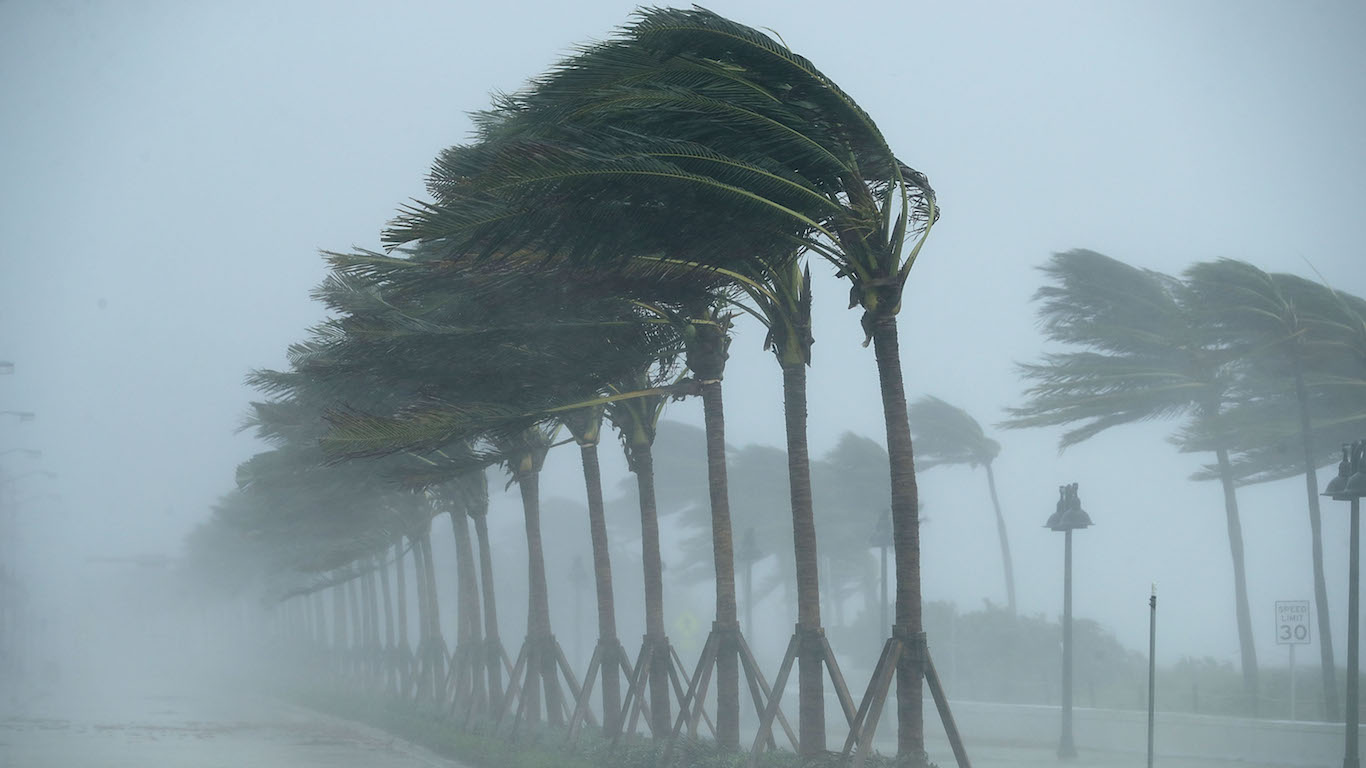
The 2020 hurricane season was one of the most active on record — a dozen different storms landed in the contiguous U.S., breaking the century-old record of nine. In fact, experts exhausted the list of 21 names used to designate hurricanes each year, forcing them to begin using Greek letters as a backup. This had only happened once before, in 2005.
The 2021 hurricane season was predicted by the National Oceanic and Atmospheric Administration to be particularly active as well. Though meteorologists can estimate the frequency of hurricanes in a given year, their power does not become apparent until the storm becomes fully formed. If hurricanes gain enough power, they can devastate the areas where they make landfall.
To determine the most powerful hurricanes of all time, 24/7 Wall St. used data from NOAA dating back to 1851 to rank tropical cyclones based on estimated central pressure at time of landfall for all hurricanes. Hurricanes were ranked according to their minimum pressure in millibars, where one millibar is the equivalent of 100 pascals in pressure. The lower a storm’s minimum pressure, the stronger the storm is. For context, air pressure is 1,013 millibars at sea level. The storms on this list had minimum pressure of 950 millibars or lower.
The frequency of tropical cyclones in a given year is rarely an indication of how intense the hurricanes may be when they make landfall — that is, how destructive they can be. Some of the most powerful storms, like Hurricane Andrew in 1992, for example, hit during one of the slower hurricane seasons of the past several decades. The strength of a hurricane is difficult to accurately predict, and the most intense storms on record vary heavily by decade, deadliness, and destructiveness.
In addition to high winds, hurricanes can batter areas with heavy rainfall, storm surges, and inland flooding. Many of the storms on this list have been the catalyst for some of the worst floods in American history.
Click here to see the most powerful hurricanes of all time
Click here for our detailed findings and methodology





